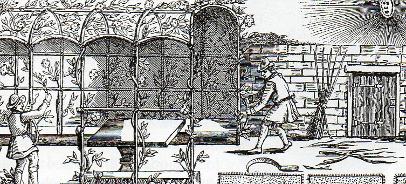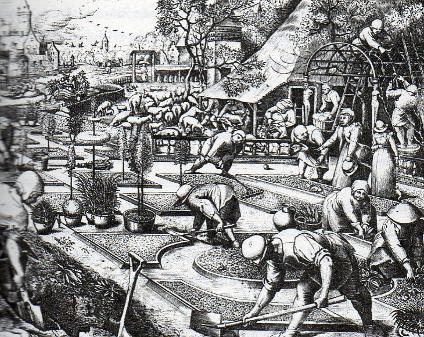I am pleased to offer you the opportunity of learning more about garden design and garden history through lectures.

About the lectures
During the garden design lectures, you
will learn about plant combinations focussing on various examples of
good plant partnerships whilst experimenting with colours, textures and
forms. Attention will be given to the qualities of plants, their
personality and strenghts, and how to use them well. Planning layouts of
different blooms throughout a period of time will also be covered.
Simple
plants can make very surprising effects when introduced in an unusual
place whilst others will need to be planted on mass to make the best
impact. They are all waiting to be discovered!
The
lectures aim to be practical; the participants will go home with plenty
of ideas to transform their gardens and to add the missing touches to
them.
You will enjoy a selection of slides on each topic and be given a comprehensive plant list.
The garden history lectures are a bit of fresh air in the garden design
world! They will introduce you to the stories that have shaped the gardens we
see today and to the people responsible for the evolution of gardens and
gardening. A real voyage in time most agreeable.
Any questions? Feel free to contact me.
Lectures available
Garden History:
The Plant Hunters
The story of plant hunters is one of the most
fascinating episodes of the history of gardens. Come and follow their paths to
discover what a passion for plants can do and to appreciate how rich our
gardens are because of their endless searches for beauty.
The Naming of Plants
How many
times have you wonder where the Latin names of plants come from? Who named them
and why? Genera, species and cultivars will be easier to remember (and perhaps
to pronounce!) after this lecture! An introduction to Carl von Linné’s work is
also on the program.
Gertrude Jekyll; the Artist behind the Gardener
Presented as an influential gardener and writer, only few know
that she was also a talented and versatile artist. Her photographic work to
save old buildings and craftsmanship’s in Surrey is one example. Come and discover a remarkable woman.
And many more!
- The history of the knot garden.
- The birth of the English landscape garden.
- Portraits of famous women garden designers of the 19th and 20th centuries.
- Gardening school for girls in the late 19th century
Garden Design:
1. Colour Combinations:
How to work with the mysterious colour wheel and to get harmony within
the plant combination. Colour combinations use the principal of contrast
to achieve subtle effects. It is done by looking carefully at size and
shape of blooms but also at foliage, stems and barks. This lecture will
show you how to balance chosen colours and how to experiment with colour
contrasts.
2. Plant Marriages:
Plants have all sorts of shapes, forms, textures and structures. When
grouping them you need to consider these features to find the best
compositions. If a marriage of two can be reasonably easy to do, a match
of three, four of more plants is quite a challenge! Also, plant
combination will change and evolue over the growing season. The design
principals of contrast, repetition, rythm and movement will be the key
factors to combine plants and to form interesting tableaux for most of the year.
3. Plant Companions :
The plants involved in a composition don't need to have the same
degree of presence; some draw lots of attention to themselves by the
size or by the colour of their blooms whilst others are discreet and are
used as companions. The companion role is to be secondary but don't
think they are not important; without them, there will be no balance and
your eyes will tire quickly. Companions are also called filler plants
and usually bear little flowers and are light and airy, filling the gaps
between the Prima Dona plants. Lots of ornamental grasses play this role. Plant companions can also be annuals, herbs or vegetables.
